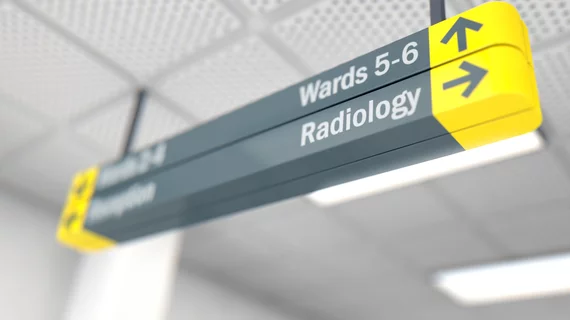More than 17% of emergency CTA results forced radiologists to break normal chain of communication
Providers order head and neck CT angiography in 2.5% of emergency department visits for a wide array of concerns, according to a new single-center study. And in many cases, radiologists must step outside their normal lines of communication to relay results.
The use of emergent imaging has ballooned over the past two decades, with CTA leading the way. Stroke care typically drives such utilization, but experts discovered urgent findings—ruptured aneurysm, pulmonary nodules, and others—that require nonroutine communication also play a factor.
In fact, head and neck CTAs were ordered for 833 different chief concerns, and radiologists went outside their normal line of communication to relay these urgent findings in 17.4% of situations.
With utilization forecasted to increase, keying in on conditions associated with lower rates of irregular communication—dizziness, leg pain, eye problems—may guide more appropriate imaging.
“Awareness of patterns regarding examinations that require nonroutine results communication by the interpreting radiologist may also help to improve radiologist operations and workflow in ED settings,” Long H. Tu, MD, with Yale’s Department of Radiology and Biomedical Imaging, and co-authors wrote Wednesday in AJR.
The findings are based on more than 700,000 ED visits from 236,000-plus patients who visited Yale’s healthcare system between January 2014 and December 2017.
The four top concerns driving CTA orders were all associated with a greater number of nonroutine communications. And three (stroke code, neurological problem and altered mental status) were likely related to concern for acute ischemic stroke, the authors noted.
Importantly, half of all head and neck exams were associated with issues that weren’t among the top 50 overall concerns, suggesting an “enormous” variety of ED ailments that lead to CTA imaging. Recurrent headaches and known migraines also had lower nonroutine communication frequencies, the authors reported.
Tu et al. said next steps for optimizing CTA use include refining clinical guidelines and developing artificial intelligence or predictive models that incorporate the latest appropriate use data.
“Such efforts must consider that head and neck CTA utilization in the ED may be driven by a desire to reduce the time to
patient disposition,” the authors added. “Thus, efforts to improve patient selection for imaging should account for the limited clinical data available at the time of initial patient triage (e.g., no laboratory results or other test results).”
Read the full study here.

